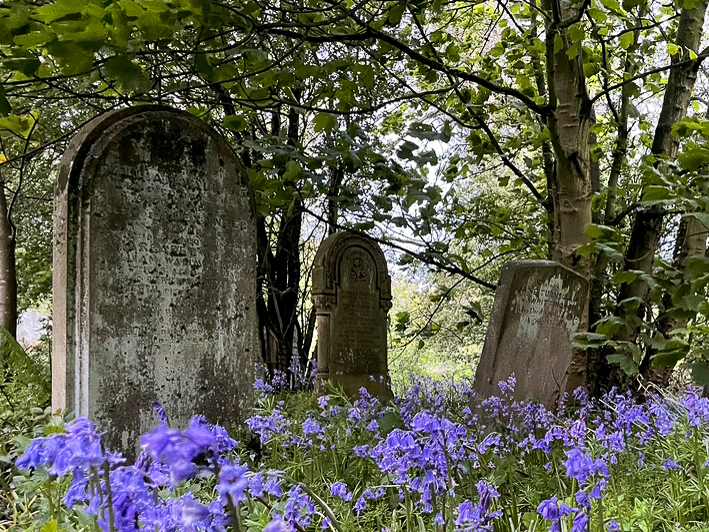In The Eve of St Agnes Keats created a poem that can cause a shiver even on a summer’s afternoon. Like the accrual of snow, or the gradual appearance of frost, the poet adds layer upon layer of freezing imagery. Into this icy world Keats introduces the fire of youthful passion, dangerous and agile, breaking convention and stealing away into the night. The chill of the poem goes hand-in-hand with a general sense of the supernatural and of a world that vanished ‘long ago’, but is brought to life through the magic of poetic imagination.
The poem includes references to funerary monuments: ‘The sculptur’d dead’. It is these figures of noblemen and women that Keats describes as ‘praying in dumb orat’ries’. Often we find the depictions of the deceased in our churches and cathedrals placed in a pose of intercession. In some religious understandings this may suggest that virtuous people who have died continue to support us through their prayers. Although not in church (but more significantly in heaven) the good continue to be in relationship with us through the prayers they offer on our behalf. It was the theology that powered an industry of intercession in the Middle Ages, with the sick, poor and clergy in particular, paid to intercede with the Saints for the souls of the wealthy seeking admission to paradise. Keats describes one of these ‘beadsmen’, someone typically pensioned in order to pray, using his rosary for those he was tasked to remember.
Numb were the Beadsman’s fingers, while he told
John Keats, The Eve of St Agnes, 1819
His rosary, and while his frosted breath,
Like pious incense from a censer old,
Seem’d taking flight for heaven, without a death,
Past the sweet Virgin’s picture, while his prayer he saith.
For anyone who has experienced a close bereavement this may not seem to be very surprising. The dead are seldom forgotten by those who were caught up in their living. The deceased continue to be with us in our thoughts, dreams and daily living. I cannot count how many times I have heard hospital patients speak about a visceral experience of a loved one being present with them. Sometimes it takes place in a dream, but it can also be an experience that appears to be as real as anything else. It was these encounters that led me to write a paper in 2014 with Stephen Sayers, discussing these experiences and suggesting how NHS staff might support such events during a patient’s admission. Interestingly, I think it is the only paper to which I’ve contributed that remains entirely uncited. This lends support to our contention in the paper that the clinical world is inclined to dismiss experiences that don’t make sense, and categorise them as evidence of mental illness. Awareness of this culture is something people discern and it is likely that many experiences like this are never shared with anyone. It seems that we lack a narrative for experiences which are real and meaningful for many, but fail to fit in with our sense of rationality.
On All Hallows’ Eve, and with All Souls’ Day this week, people around the world will be reflecting on those who have died. Given that our awareness and thoughts about the dead are often private and internal, this week offers a rare moment for names to be spoken and people remembered in public. Despite the continuing growth of a playful and scary Halloween, the serious, quiet and moving act of explicit remembrance offers a less spectacular but deeper moment when we acknowledge our continuing bonds with the departed. Remembrance Sunday adds to the sense that November has an inclination to memorial.
We continue to have traffic with those we have loved but see no more. There are particular moments, such as a family wedding, when those attending may think of the people who are absent – but whose blessings would be with the couple and their future. Choices we make in life may lead us to ponder what the deceased would think of our decisions. For better or worse, the silent prayers of the dead circle our experience and commune with our conscience. What may seem to be dumb and frozen out of our reality is never wholly gone. In different ways Halloween; All Hallow’s; All Soul’s and Remembrance Sunday remind us of this truth and allow a fleeting moment for what is hidden to be spoken and named.
We die with the dying:
See, they depart, and we go with them.
We are born with the dead:
See, they return, and bring us with them.
TS Eliot, Little Gidding

